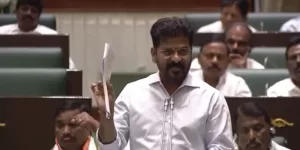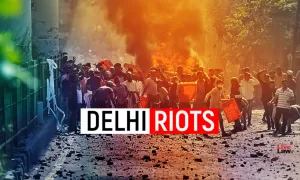On March 25 is observed the death anniversary of Ganesh Shankar Vidyarthi, a great editor, a highly dedicated freedom fighter and a lifelong crusader for justice and freedom who sacrificed his life at a young age of 41 in 1931 while trying to stop communal violence and rescue trapped people.
His death in Kanpur, the central place of his work although he was Congress leader for the vast area of United Provinces, just two days after the hanging of Bhagat Singh, Rajguru and Sukhdev was regarded as a very big setback at a critical stage of the freedom movement and there are many people who believe that Vidyarthi was trapped by colonial rulers into a riot where he was to be killed without the government getting blamed for this.
This view gains credibility when we remember that Vidyarthi had a very special position as a bridge between the Congress and the revolutionaries. Jawaharlal Nehru had a very high regard for him. It is apparent from the rich tributes paid to him by both Mahatma Gandhi and Jawaharlal Nehru, as well as the position he occupied as the highly respected leader of the United Provinces at a very young age, that his position in the Congress was very strong. Yet he also enjoyed fully the confidence of such leading revolutionaries as Bhagat Singh and Chandra Shekhar Azad, the former having been trained by him as an assistant editor of sorts while still in his teens.
What is not so well-known is that Vidyarthi had a role in channelizing the high energy levels of young revolutionaries along lines of greater constructive achievements. As they respected his understanding and wisdom, revolutionaries quietly consulted Vidyarthi regarding some ‘actions’, and often Vidyarthi would exercise restraint to prevent what would have been avoidable violence. As revolutionaries moved towards making a more durable impact on people by satyagraha type actions and fasts in jail during 1929-31, the influence of mentors like Vidyarthi could be seen in this change.
At the same time his role as an editor was nothing short of being glorious. For 18 years at a stretch, with continuity, (1913-31) he fought colonial rule with his one foot in office and the other in prison. In addition he was all the time fighting court cases filed by very powerful persons as well. His newspaper Pratap became a leading forum for the wider freedom movement as well as various struggles against various big feudal interests and royalty.
In addition he repeatedly took up the issue of communal harmony in his newspaper and also helped several citizens’ efforts in this direction, particularly in Kanpur. He played a leading role in forming an organization called Hindustani Biradari which organized programs on communal harmony and joint celebrations of various festivals.
Vidyarthi repeatedly warned people against falling prey to communal propaganda. He could foresee that to divert the rising tide of freedom movement, the forces of imperialism will try to help and incite the narrow communal forces on both sides. So he wrote against this several times. But even he could not have foreseen that his own life will be lost in trying to control this violence.
In the early days of 1931 the popularity of Bhagat Singh and other revolutionaries who had been imprisoned by the British was at its peak. In a different case Vidyarthi was also in jail but he was released just a few days before the hanging of Bhagat Singh, Rajguru and Sukhdev on March 23.
These revolutionaries were very close and dear to Vidyarthi. Given his high organization capability and his mass base it was very likely that Vidyarthi would have mobilized perhaps the biggest opposition against the hanging of Bhagat Singh, Rajguru and Sukhdev. Keeping this in mind, the colonial regime instigated one of the worst communal violence in Kanpur around the same time that the three revolutionaries were executed.
As Vidyarthi had himself just come out of jail, he did not get enough time to mobilize people against this possibility. However once the flames of communal violence started burning, he made very determined efforts to rescue as many people as he could. People saw him rescuing trapped people from both communities.
It was in the course of these repeated efforts that at some stage he was stabbed and killed. There are indications that following the death sentence given to Bhagat Singh, Sukhdev and Rajguru instructions had been given by colonial rulers also to eliminate Vidyarthi as he was seen as a bridge between the revolutionaries and the Congress.
This view is supported in an interview of his daughter Vimla Vidyarthi which was conducted by Suresh Salil who has edited and compiled the collected works of Ganesh Shankar Vidyarthi.
Vimla stated that she sees the killers not as rioters but as persons guided by colonial rulers. She recalled a well-informed person stating earlier that day that weapons are being distributed in several localities and it is being said that the Lion of Kanpur will be killed today (Kahat hai ki Kanpur ka sheru mara jai). Of course the Lion of Kanpur reference is to Vidyarthi. The concluding observation of Vimla was that the killing of Vidyarthi was a part of the same conspiracy which led to the hurried execution of Bhagat Singh, Sukhdev and Rajguru.
This is all the more reason why the nationwide observance of martyrdom day of Bhagat Singh, Rajguru and Sukhdev should be followed up also by observing the martyrdom day of Ganesh Shankar Vidyarthi. He is an enduring symbol that when we fight for justice, equality, freedom and harmony, a broader unity should be established, ignoring smaller differences. Vidyarthi Ji lived this reality by creating a very united movement of such forces in the region around Kanpur for nearly two decades which had a much wider impact.
(Bharat Dogra has consistently contributed articles, booklets, books and short stories on the freedom movement.)




